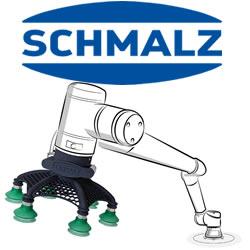European Union: Industries Invest Heavily in Robotics – Sales Up 6%
Industrial robots in Europe are on the rise: The European Union´s (EU) 27 member states installed almost 72,000 units in 2022 – up 6% year-on-year. These are PRELIMINARY results, presented by the International Federation of Robotics (IFR).
Industrial robots in Europe are on the rise: The European Union's (EU) 27 member states installed almost 72,000 units in 2022 - up 6% year-on-year. These are PRELIMINARY results, presented by the International Federation of Robotics (IFR).
"The top five adopting countries within the EU are Germany, Italy, France, Spain and Poland," says Marina Bill, President of the International Federation of Robotics (IFR). "They account for about 70% of all industrial robots installed within the EU in 2022."
Germany is by far the largest robot market in Europe: about 26,000 units (+3%) were installed in 2022. This was a share of 37% of total EU installations. Worldwide, the country had the fourth highest robot density, following Japan, Singapore, and the Republic of Korea.
Italy is the second largest robot market in Europe after Germany. An all-time high of almost 12,000 units (+10%) were installed in 2022. This was a share of 16% of total EU installations.
The robot market in France ranked third in Europe in 2022. Annual installations went up by 15% with a total number of 7,400 units. This is less than a third the number of neighboring Germany.
Annual installations in Spain grew by 12% with a total number of 3,800 units. Robot installations are traditionally determined by the automotive industry.
Robot installations in Poland had been on a strong upward trajectory for nine years.
Annual installations reached a total number of 3,100 units in 2022 - the second-best result after the new peak level of 3,500 units in 2021.
Featured Product

Schmalz Technology Development - The Right Gripper for Every Task
In order to interact with their environment and perform the tasks, lightweight robots, like all industrial robots, depend on tools - and in many cases these are vacuum grippers. These form the interface to the workpiece and are therefore a decisive part of the overall system. With their help, the robots can pick up, move, position, process, sort, stack and deposit a wide variety of goods and components. Vacuum gripping systems allow particularly gentle handling of workpieces, a compact and space-saving system design and gripping from above. Precisely because the object does not have to be gripped, the vacuum suction cupenables gapless positioning next to each other.
